Giải đề IELTS Listening Actual Test Vol 6 Test 2: Foundation For Essay Writing
TÓM TẮT NỘI DUNG

Thí sinh cần lưu ý đề bài từ câu 21-15 yêu cầu “Write ONE WORD ONLY for each answer.” và câu 26-30 yêu cầu “Write NO MORE THAN TWO WORDS OR A NUMBER for each answer.”

Giải đề IELTS Listening Actual Test 6, Test 2, Section 3: Foundation For Essay Writing
Question 21.
Đáp án: topic
Vị trí thông tin:
Eric : Yes, I have a few issues to discuss. Obviously I want a good essay, and I want to achieve high marks. But I’m not sure on the best way to start .
Ms. Harris : That’s an easy question. Start with a topic , but not one that I necessarily suggest, but one that you want to explore . You will always write better when doing so on a topic you are interested in , not one imposed upon you by others.
Giải thích:
Từ loại cần điền: danh từ
Nội dung: một việc nào đó cần được đưa ra lựa chọn
Đây là bước đầu tiên của flowchart, thí sinh cần lưu ý đến từ khóa “start” vì theo sau có thể sẽ là đáp án của ô trống. Eric nói rằng cậu ấy không biết cách tốt nhất để bắt đầu bài luận là gì và Ms. Harris gợi ý nên bắt đầu với một chủ đề mà cậu ấy muốn nghiên cứu (từ khóa “you like” trong đề được nhắc đến trong bài qua cụm “you want to explore” và “you are interested in”). Vì vậy, đáp án là “topic”.
Question 22
Đáp án: current
Eric : Well, I’m interested in management theory.
Ms. Harris : Then pursue that. However, that alone is far too broad. Break it into various current areas of discussion and relevance , then look more carefully at one of them — say, management and cultural differences, or management and motivation, or other aspects, such as the role of salary, group cohesion, or leadership.
Từ loại cần điền: tính từ
Nội dung: một lĩnh vực nào đó cần được tập trung vào
Ms Harris cho rằng chủ đề mà Eric chọn quá rộng nên cần chia nó thành những lĩnh vực hiện tại được thảo luận và có liên quan. (từ khóa “focus” được diễn đạt thành “look more carefully” và “area of interest” diễn đạt thành “areas of discussion and relevance”). Vì vậy, đáp án là “current”.
Question 23
Đáp án: thesis
Ms. Harris : Well, that’s a start, but you can’t then just write planlessly, without defining exactly what you intend to do within the area you’ve chosen. You’ll have to think of a thesis , and this statement could be of several types.
Nội dung: cần một loại statement nào đó để bắt đầu bài luận sau khi đã xác định được chủ đề
Sau khi Eric đã chọn được chủ đề cho bài luận, Ms. Harris cho rằng không thể cứ thế mà viết một cách thiếu kế hoạch mà cần nghĩ đến một luận đề cho bài. (từ khóa “write” được báo hiệu trong bài qua cụm “write planlessly” và keyword “statement” trong câu hỏi được đề cập qua cụm “this statement”, giải thích cho từ “thesis” đứng trước). Vì vậy, đáp án là “thesis”.
Question 24
Đáp án: outline
Eric : I see. And then I can just begin writing, right?
Ms. Harris : Wrong! If your essay is going to be clear, it needs to be logical and organized, and this means you’ll need an outline . This could be written as a flowchart, or spider graph…
Nội dung: một phần nội dung nào đó cần được tạo sau khi viết câu luận đề
Từ “then” báo hiệu cho một bước làm tiếp theo. Ms. Harris cho rằng để viết bài luận một các hợp lý và rõ ràng thì sau khi viết câu luận đề, Eric cần phải tạo một dàn bài (từ khóa “create” trong đề được diễn đạt qua cụm “you’ll need”). Vì vậy, đáp án là “outline”.
Question 25
Đáp án: progress
Ms. Harris : Wrong! If your essay is going to be clear, it needs to be logical and organized, and this means you’ll need an outline . This could be written as a flowchart, or spider graph — that is, a series of connected lines, but whatever shape the outline takes , there must be a sense of progress , in, more or less, a straight line, towards a goal.
Nội dung: đảm bảo cái gì đó của phần dàn bài thật rõ ràng
Từ “this” trong đề bài chỉ đến từ “outline” trong câu hỏi trước. Ms. Harris cho rằng “outline” có thể được trình bày dưới nhiều dạng sơ đồ, nhưng dù ở dạng nào thì nó cũng cần thể hiện được chiều hướng phát triển logic, mạch lạc hướng tới một mục tiêu cụ thể. Từ khóa “ensure” được đề cập trong đoạn hội thoại bằng từ “must” và “clearly” được diễn đạt thành “a sense of”.
Question 26
Đáp án: aspects
Eric : Well, Ms. Harris, your advice about essay writing all sounds very useful: solid, and step by step, so I’ll certainly follow that. But can you tell me in more general terms, what constitutes the best essay ?
Ms. Harris : Oh, there are many aspects to consider , but one of the most important is certainly, original thinking. The best essays are written by people who think for themselves, and not just copy or imitate established views.
Từ loại cần điền: danh từ số nhiều
Nội dung: những điều góp phần tạo nên một bài luận hay
Ms. Harris cho rằng để viết một bài luận hay sẽ cần xem xét nhiều khía cạnh. Từ khóa “producing a good essay” trong đề bài được diễn đạt thành “constitutes the best essay” trong lời thoại của Eric. Đồng thời, cụm từ xuất hiện nhằm báo hiệu cho người nghe về nội dung chính sắp được đề cập đến. Từ khóa “several” cũng được diễn đạt thành “many” và theo sau là đáp án “aspects”.
Question 27
Đáp án: real-life
Ms. Harris : … The best essays are written by people who think for themselves , and not just copy or imitate established views.
Eric : I think I can do that.
Ms. Harris : But remember, you can’t just give a list of unsupported assertions. There needs to be support as well — a chain of logic linking each step in your argument. Yet that alone is not enough. Your argument may be logically sound, but is it practically so? For that, you need examples, from real-life , to illustrate your points or sub-points.
Nội dung: bài luận cần có những ví dụ như thế nào để hỗ trợ cho luận điểm của mình bên cạnh việc người viết phải có tư duy độc lập.
Ý đầu tiên trong câu “think independently” được diễn đạt qua “people who think for themselves” và nó sẽ cho người nghe biết rằng sắp tới đáp án. Sau đó, Ms. Harris có nhắc tới keyword “There needs to be support” và “For that, you need examples”, tiếp theo sẽ là đáp án “real-life“ (là một tính từ ghép).
Question 28
Đáp án: necessity
Eric : I’ve got lots of examples from my course readings. I suppose I could use them.
Ms. Harris : But remember, whenever you use an example , or facts or figures that are not commonly known, you must give a reference . That’s an academic necessity, without which your writing will automatically fail.
Nội dung: mỗi ví dụ để chứng minh cho luận điểm cần được đi kèm với nguồn tham khảo “reference”, được xem như một cái gì đó.
Giáo sư cho rằng với bất kỳ ví dụ, thông tin hay số liệu nào không được coi là kiến thức chung thì việc trích dẫn nguồn là yêu cầu bắt buộc trong các văn bản học thuật. Cụm “you must give a reference” có đề cập đến từ khóa “reference” cho người nghe biết sắp đến đáp án và theo sau đó là “That’s an academic necessity”.
Tuy nhiên do trong đề bài đã cho sẵn mạo từ “a” trước danh từ cần điền vào, thí sinh không thể điền cả cụm “academic necessity” mà đáp án đúng sẽ chỉ là “necessity”.
Question 29
Đáp án: style guide
Ms. Harris : Absolutely—and with that, your essay will be fine, but always ensure that you format it clearly.
Eric : What do you mean?
Ms. Harris : I mean the practical considerations, as written in the university style guide , such as leaving appropriate margins, using double spacing, Arial font, and so on. You see, your writing must look good, as well as be good.
Nội dung: loại giấy tờ do trường đại học hướng dẫn về cách chỉnh sửa format của bài luận
Ms. Harris cho rằng bài luận của Eric sẽ ổn thôi nếu cậu ấy đảm bảo format được trình bày rõ ràng. Từ khóa “format” xuất hiện cho thí sinh chú ý sắp tới nội dung quan trọng. Cụm “issued by the university” trong đề được diễn đạt thành “written in the university” và theo ngay sau đó là đáp án “style guide”.
Đáp án: 10%
Ms. Harris : … you need to respect the number of words required. Your individual lecturers will … nor too short— perhaps 10% either way should be acceptable . 15% was … a little too far.
Từ cần điền: danh từ hoặc có thể là số đếm
Nội dung: khoảng chênh lệch cho phép đối với số lượng từ cần thiết của một bài luận
Từ khóa “word count” trong đề bài được diễn đạt thành “number of words required”. Sau đó từ khóa về số từ lại được lặp lại trong cụm “a word-count figure” báo hiệu sắp tới khúc đáp án. Khoảng chênh lệch cho phép “can vary by” được giáo sư cung cấp là “perhaps 10% either way should be acceptable”. Vì vậy, đáp án là “10%”.
Tiếp theo trong đoạn hội thoại có nhắc đến 2 giá trị là 15% và 20%, tuy nhiên đây là thông tin gây nhiễu. 15% là theo quy định trước đây, còn 20% bị chênh lệch quá nhiều.
Bài viết đã cung cấp toàn bộ đáp án cho đề IELTS Actual Test 6, Test 2, Listening Section 3: Foundation For Essay Writing kèm các giải thích chi tiết. Ngoài ra, để có thể chuẩn bị thật tốt và tránh bỡ ngỡ trong bài thi chính thức,người học có thể đăng ký làm bài thi thử IELTS tại ZIM Academy.
Xem tiếp: Giải đề IELTS Listening Actual Test Vol 6 Test 2, Section 4: Geocentrism Vs Heliocentrism
- IELTS Recent Actual Test Vol 6
Để rút ngắn thời gian học tập, đạt điểm IELTS trong thời gian gấp rút. Người học có thể tham gia ôn thi IELTS cấp tốc tại ZIM để được hỗ trợ tối đa, cam kết đạt kết quả đầu ra.
Bạn muốn học thêm về nội dung này?
Đặt lịch học 1-1 với Giảng viên tại ZIM để được học sâu hơn về nội dung của bài viết bạn đang đọc. Thời gian linh hoạt và học phí theo buổi
Gửi đánh giá
Bình luận - Hỏi đáp

Reading Actual Tests
Download PDF ielts reading test
Listening Recent Tests
Download PDF ielts listening test
english-practice.net
Practice English Exercises to Improve Your Skills
english-exercises.net
Practice More English Exercises to Improve Your Skills
englishpracticetest.net
Practice More English Tests to Improve Your Skills
Cambridge Practice Test
Practice Cam Listening Test with Answer & Transcript
Listening Practice Test
Practice Listening Test with Answer & Transcript
Practice Cambridge Reading Test with Answer
Practice Reading Test
Practice Reading Test with Answer
Practice Reading Mock Test with Answer
Speaking Practice Test
Speaking Practice Test with with Band 8-9 Samples
42 Common Topics for ielts Speaking Part 1
100 TOPICS for ielts Speaking Part 2 with Band 8 Sample
70 TOPICS for ielts Speaking Part 2 with Band 8+ Sample Recordings
Vocabulary Words
Most Common Vocabulary Topics for ielts Speaking
Writing Practice Test
Writing Practice Test with Band 8-9 Samples
Writing Mock Test with Band 8-9 Samples
Writing Task 2 Topics with Band 7-8-9 Samples
General Reading Tests
Practice General Reading Test with Answer
Audioscripts Listening Practice Test 02
audio script ielts listening
You will hear two students, Peter and Mary, discussing their new eating plan.
Peter: Okay Mary, I know I’m putting on weight with all my bad eating habits.
Mary: That’s right. Chocolate bars, pizzas, and all washed down with litres of soft drink. And with all the sugar in soft drink (Example) , I think we can say you’re definitely overindulging, don’t you think?
Peter: I know, I know. I intend to definitely stop drinking that from now on.
Mary: And that’s part of the sensible eating plan that we have agreed we need to formulate—one that we can both follow.
Peter: That’s right, sensible, and practical (Q1) — allowing us to indulge in some sweet foods on occasions.
Mary: On rare occasions, and we’re going to cut out all the pizzas (Q2) and hamburgers.
Peter: Well, not totally. I thought you said pizzas could be eaten once a week. You know how I like pizzas.
Mary: No. I said once every two months. Once a week was ice cream, not pizza.
Peter: Yeah, that’s because you like ice cream. I prefer pizza.
Mary: Peter, if you want to lose weight, you need to be disciplined, in both what you eat, and what you do, which brings us to the issue of exercise.
Peter: That’s right. So, jogging twice a week, and hiking on Saturdays, right?
Mary: No, hiking is Sundays, allowing Saturdays for the light walking (Q3) exercise. I’ve investigated, and discovered there are a lot of walking trails around this suburb, with many beautiful places if you just look around.
Peter: So what’s happening this Saturday? A walk around the city?
Mary: That’s later in the month. This Saturday we’ll visit Pine Park (Q4) .
Peter: Hill Park is nicer, with great views, too,
Mary: Yes, but we have to travel too far to reach Hill Park, so I ruled that out, and I love the smell of pines.
Peter: And what about the weekday meals? Salads every night, I suppose?
Mary: No, it’s important to vary the meals so that the food remains interesting and fun. The only common factor is the fruit juice (Q5) , but otherwise we’ll have a variety of healthy fare, from salads, to fish, to lean meat.
Peter: I’d rather have meat every night, but you’re the boss.
Mary: If you want to lose weight, you’ll have to accept this program, okay?
Peter: Okay.
Peter: Now Mary, you said we could have a little treat in our diet plan three times a week: specifically, Tuesdays, Thursdays, and Sundays.
Mary: Yes. A very small treat, but something to reward us for all the discipline shown. Such rewards will motivate us to continue the diet.
Peter: So, on Tuesdays, what can I choose? (Q6)
Mary: You have a choice between a small serving of chocolate, ice cream, or biscuits.
Peter: Okay, well, I’ll go for the biscuits (Q6) . I love those crunchy little things with my cup of tea. So do you, right?
Mary: I do indeed, so I’ll have them, too, saving the ice cream for later.
Peter: But I know how much you like ice cream, so why don’t you save it for the end of the week? That will give you the motivation to keep going, and you can have chocolate midweek?
Mary: That’s a good idea, but I think the most important thing is for you and I to eat different things on those other two days.
Peter: Well, if you think that way, I’ll eat the ice cream on Thursdays (Q7) , not the chocolate. Okay?
Mary: Well, if you’re having that, then I can’t have ice cream. I order to be different, I’ll have the chocolate (Q8) .
Peter: So, we can compare our different snacks, and maybe even share a little with each other.
Mary: Exactly! And the variety and fun involved will take our minds of wanting more.
Peter: Eating for fun! A good idea!
Mary: And then you can have the chocolate on Sunday (Q9) , right?
Peter: But I like biscuits? Actually, I want biscuits again—to have with my cup of tea.
Mary: But you have the biscuits on Monday, remember, and we can’t repeat.
Peter: Ah come on! This isn’t fixed in concrete. I can have them again instead of chocolate. You might like variety, but I don’t. I’m a creature of habit.
Mary: Well, the whole point of this was to taste different snacks, but if you want the same thing, okay. I, for one, am sticking to the original plan, with ice cream to finish the week, and not another dose of chocolate (Q10) .
You will hear a childcare worker telling some mothers about the advantages of her centre.
Hello everyone, and welcome to the Stanfield Childcare Centre. Now I know you’re all new mothers, and you like to cling to your children. You’ve certainly spent a lot of time raising them to the age of four and are perhaps reluctant to leave them here at our centre. Well, one of the first things you should understand is that here it is safe — very safe. Look around and you’ll see that every room has padded (Q11) walls. Other centres have standard painted walls, but here, we have invested a lot to ensure your children will not hurt themselves when running around and possibly tripping over. This padding extends around all corners (Q12) — that is, the areas most likely to bruise and cut your active little child. So, you can rest assured that any accidents of a physical nature are not likely to happen here.
Now, you don’t want to dump your child at this centre and let them waste their lime. You want them to learn, and that’s one of the greatest assets of our establishment. Our staff are not only trained childcare workers, but all of them have a special skill (Q13) , which they can imparl to your child, whether it be teaching the ABC, some basic mathematics, artistic skills, or physical education. We are particularly known for our pre-school literacy program and have a wealth of learning toys (Q14) , specially designed to develop your child’s potential.
Of course, one concern many mothers have is that, in environments such as these, colds and flus and other viral nasties can be easily spread around. It’s a very legitimate concern, and one which we take seriously, and we pride ourselves on our precautions. For a start, unlike most centres which clean with standard detergents, we disinfect (Q15) every surface at the end of every day, using a special disinfectant wash. Some places just wipe surfaces daily with a damp cloth, but not us. And that’s just the start. We also physically check your children when they arrive every day, and if we feel your child is sick, we ask him or her to wear a face mask to ensure germs (Q16) are not transmitted. If your child is noticeably sick, then we ask you to take them back home to recover. This might sound a little unkind, but we hope parents can understand that these measures are for the benefit of all.
Now, at Stanfield Childcare Centre we have excellent childcare officers, and let me briefly introduce them. We have Susan, Andrea, Bella, Cathy, Lisa, and Liz. They’re all fully trained and come with some individual assets which make them even better. Bella, for instance, knows children very well, having worked here for five years, and Cathy has her own family — two little girls — so she can talk to you with first-hand knowledge of what it’s really like to raise children (Q17) . But getting back to Bella, she often relaxes here after work, spending long hours chatting to parents, as does Cathy in fact. But in terms of hours, nothing can compare to Andrea, who will sometimes spend the night here, staying in our overnight room (Q18) . Why? Because this centre is very friendly, and simply a great place to be. Bella, for example, used to be quite shy herself but now is marvelous with the little kiddies, as outgoing as any of them. We let Cathy, though, deal with the particularly quiet and introverted children (Q19) , since having her own family, she knows what can really bring them out.
Of course, what better way to do this than with yummie homemade cakes, and Cathy often gets these from Bella, who can make some of the best in town (Q20) . Yes, everyone here brings something special, which is why we’re one of the best childcare centres in the business.
You will hear a student, Eric, talking to his lecturer, Ms Harris, about essay writing.
Eric: Hi, Ms Harris. Here we are, talking once again.
Ms Harris: Well, I’m always willing to help out wherever possible. Is anything troubling you?
Eric: Well, your advice last week about writing summaries was very useful, and I’m using these summaries a lot in order to prepare my final master’s thesis.
Ms Harris: But you’re having problems, right?
Eric: Yes, I have a few issues to discuss. Obviously I want a good essay, and I want to achieve high marks. But I’m not sure on the best way to start.
Ms Harris: That’s an easy question. Start with a topic (Q21) , but not one that I necessarily suggest, but one that you want to explore. You will always write better when doing so on a topic you are interested in, not one imposed upon you by others.
Eric: Well, I’m interested in management theory.
Ms Harris: Then pursue that. However, that alone is far too broad. Break it into various current (Q22) areas of discussion and relevance, then look more carefully at one of them — say, management and cultural differences, or management and motivation, or other aspects, such as the role of salary, group cohesion, or leadership.
Eric: I would say I’m interested in group cohesion—that is, how people interact in the workplace.
Ms Harris: Well, that’s a start, but you can’t then just write planlessly, without defining exactly what you intend to do within the area you’ve chosen. You’ll have to think of a thesis (Q23) , and this statement could be of several types.
Eric: Such as what?
Ms Harris: Oh, you could argue a point, something that you believe in; or discuss an issue, looking at its various perspectives; or critique the opinions of others, pointing out the pitfalls and flaws. The thesis statement will make that very clear because it will say, in simple terms, what you intend to achieve in your essay.
Eric: I see. And then I can just begin writing, right?
Ms Harris: Wrong! [Uh?] If your essay is going to be clear, it needs to be logical and organised, and this means you’ll need an outline (Q24) . This could be written as a flowchart, or spider graph — that is, a series of connected lines, but whatever shape the outline takes, there must be a sense of progress (Q25) , in, more or less, a straight line, towards a goal.
Eric: And then my essay will be good?
Ms Harris: With such progression, definitely—as long as you do achieve everything that you set out to do, as specified in the beginning, okay?
Eric: Well, Ms Harris, your advice about essay writing all sounds very useful: solid, and step by step, so I’ll certainly follow that. But can you tell me in more general terms, what constitutes the best essay?
Ms Harris: Oh, there are many aspects (Q26) to consider, but one of the most important is certainly, original thinking. The best essays are written by people who think for themselves, and not just copy or imitate established views.
Eric: I think I can do that.
Ms Harris: But remember, you can’t just give a list of unsupported assertions. There needs to be support as well — a chain of logic linking each step in your argument. [Right] Yet that alone is not enough. Your argument may be logically sound, but is it practically so? For that, you need examples, from real-life (Q27) , to illustrate your points or sub-points.
Eric: I’ve got lots of examples from my course readings. I suppose I could use them.
Ms Harris: But remember, whenever you use an example, or facts or figures that are not commonly known, you must give a reference. That’s an academic necessity (Q28) , without which your writing will automatically fail.
Eric: So, it’s necessary to give these. Right.
Ms Harris: Absolutely—and with that, your essay will be fine, but always ensure that you format it clearly.
Eric: What do you mean?
Ms Harris: I mean the practical considerations, as written in the university style guide (Q29) , such as leaving appropriate margins, using double spacing, Arial font, and so on. You see, your writing must look good, as well as be good.
Eric: I can certainly do that.
Ms Harris: And, finally, related to the previous point, you need to respect the number of words required. Your individual lecturers will give you a word-count figure, so follow what they say, making your essay neither too long, nor too short—perhaps 10% (Q30) either way should be acceptable. 15% was common when I was younger, but it’s a lot stricter now, and 20% would be pushing the boundaries just a little too far.
Eric: I guess I can do all that. Thanks for your advice.
You will hear a lecturer discussing the history of people’s beliefs regarding whether the sun, or the Earth, is at the centre of the solar system.
In the night sky, the stars appear to revolve around the Earth, rising in the east, and disappearing in the west. The Earth itself seems solid, fixed, and stable, and such common sense perception suggests that the Earth is the centre of the universe. This is known as ‘geo’ ‘centrism’, with geo meaning Earth, and all pre-modern civilisations drew this conclusion (Q31) . We now know, of course, that the Earth revolves around the sun, and this is called ‘helio’ ‘centrism’, with helio meaning sun, but historically, it took quite a while for this to be deduced.
As early as the third century BC, an ancient Greek astronomer, Aristarchus of Samos, proposed heliocentrism, but received little support from his peers. Similarly, throughout subsequent history, isolated individuals proposed this new idea, but again, no one was listening (Q32) . Geocentrism just seemed too logical to refute. Geocentrism also fitted the views of the established Christian church, who could quote biblical passages such as ‘the world also shall be stable, that it be not moved’. Those who dared disagree were subject to accusations of heresy, often with dire punishments to follow.
The trouble was, as the night sky was observed more closely, that simple revolution of the stars proved not so simple at all. In relation to the others stars, some steadily wandered in given directions, then sometimes reversed for months, and disappeared altogether. They were called planets, meaning ‘wanderers’. In addition, the position of the sun and moon altered slightly over the year, and comets, those mysterious glowing spots, would come and go. In order to predict the motion of the planets, and accurately serve the primary purpose of navigation for sailing ships, increasingly elaborate mathematical models were needed—a sure sign that something was not quite right (Q33) .
Heliocentrism, or the belief that the sun is the centre of the solar system, still needed a mathemalically-sound description before it could be scientifically accepted, and it was a Polish astronomer, Nicolaus Copernicus, who, in 1543, first published this. This event is sometimes referred to as the Copernican revolution (Q34) . Copernicus himself certainly feared the consequences of his proof, knowing full well it might invoke the anger of the established church. Probably for this reason, he wailed until the last year of his life, when he was sick (Q35) and dying, to release his findings. In addition, the preface of the book, written by a respected member of the church, staled that the model was not necessarily correct. As a result of this, there was no ‘revolution” whatsoever—in fact, the book received scant attention (Q36) in the subsequent decades, apart from a few irate clergy men who angrily dismissed the whole scheme as irrelevant.
Yet the following generations of astronomers did not always fare so well. The Italian scientist, Galileo, got into trouble, as did a fellow Italian, with the surname Bruno, Giordono Bruno (Q37) . who was burnt at the stake, yet ultimately, nothing could slow the spread of heliocentrism across Europe. It formed the basis of lsaac Newton’s great work on the motion of the planets — a work which implied that even the sun. around which the Earth circled, was itself in motion (Q38) around a common centre of gravity.
No discourse about heliocentrism could finish without mentioning that, somewhat unbelievably, there still exists those today who choose to believe that the Earth is the centre of the universe. Modern geocentrism is usually the result of literal interpretations of the Bible (Q39) , which is the cornerstone of these people’s beliefs. They, therefore, also believe in creationism — that is, that a God created everything, and while we may smile at this, it is sobering to consider that surveys have revealed that up to 10% of British people, 12% of Europeans. 20% (Q40) of the ESA, and 25% of the Middle East, still hold the belief that the sun revolves around the Earth. One can only wonder what Copernicus would have thought of this.
Listening Practice Test 02
1 Practical
3 (light) walking
4 Pine Park
5 Fruit juice
13 Special skill
14 Learning toys
15 Disinfect
25 Progress
27 Real-life
28 Necessity
29 Style guide
34 Revolution
36 Attention
Submit a Comment Cancel reply
Your email address will not be published. Required fields are marked *
Save my name, email, and website in this browser for the next time I comment.
Download ebooks
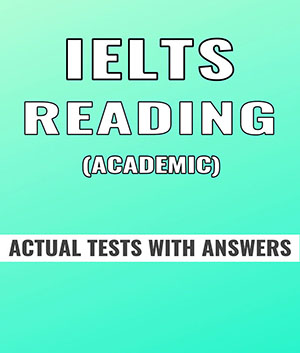
- IELTS Scores
- Life Skills Test
- Find a Test Centre
- Alternatives to IELTS
- General Training
- Academic Word List
- Topic Vocabulary
- Collocation
- Phrasal Verbs
- Writing eBooks
- Reading eBook
- All eBooks & Courses
- Practice Tests
- Ielts Listening Test With Answers
IELTS Listening Test with Answers
This is a full IELTS listening test with answers.
In the video you can watch the IELTS listening test and the answers are at the end of the video, or you can download the answers below.
If you want you can download this answer sheet to write your answers on, though remember in the real test candidates write them on the exam paper then transfer them to the answers sheet in the 10 minutes given at the end.
IELTS Listening Test

Download answers:
In the next set of videos, you can see the same test, but you can see the test sheet as the audio plays, and the answers appear in the gap in the right place as they are spoken.
It's a useful way to see how to approach the listening test if you are new to it.




Any comments or questions about this page or about IELTS? Post them here. Your email will not be published or shared.
Before you go...
Check out the ielts buddy band 7+ ebooks & courses.

Would you prefer to share this page with others by linking to it?
- Click on the HTML link code below.
- Copy and paste it, adding a note of your own, into your blog, a Web page, forums, a blog comment, your Facebook account, or anywhere that someone would find this page valuable.
Band 7+ eBooks
"I think these eBooks are FANTASTIC!!! I know that's not academic language, but it's the truth!"
Linda, from Italy, Scored Band 7.5

IELTS Modules:
Other resources:.
- All Lessons
- Band Score Calculator
- Writing Feedback
- Speaking Feedback
- Teacher Resources
- Free Downloads
- Recent Essay Exam Questions
- Books for IELTS Prep
- Useful Links

Recent Articles
Useful Language for IELTS Graphs
May 16, 24 04:44 AM

Taking a Gap Year
May 14, 24 03:00 PM
IELTS Essay: Loving Wildlife and Nature
May 10, 24 02:36 AM
Important pages
IELTS Writing IELTS Speaking IELTS Listening IELTS Reading All Lessons Vocabulary Academic Task 1 Academic Task 2 Practice Tests
Connect with us
Copyright © 2022- IELTSbuddy All Rights Reserved
IELTS is a registered trademark of University of Cambridge, the British Council, and IDP Education Australia. This site and its owners are not affiliated, approved or endorsed by the University of Cambridge ESOL, the British Council, and IDP Education Australia.
- Practice Test
- Useful Tips – Tricks
- Full Writing Review
- General Writing Task
- Writing Task 1
- Writing Task 2
- Writing Exercises
- Writing Sample – Topics
- Writing Vocabulary
- Speaking Vocabulary
- Intro Question
- Speaking Part 1
- Speaking Part 2
- Speaking Part 2 – Audio
- Speaking Part 3
- IELTS Books
- Recent Exams
- IELTS Vocabulary
- Essay from Examiners
- IELTS Ideas

Questions 34-40
Complete the notes.
Write ONE WORD OR A NUMBER for each answer.
Answer/Transcript
LATEST POSTS
Ielts listening practice test 24 – full answer, ielts listening practice test 23 – full answer, ielts listening practice test 22 – full answer.

IELTS App - For Mobile
Ready for the IELTS exam with our IELTS app. Over 2 million downloads

Popular Last 24h
Ielts listening actual test with answers – test 3, writing task 1: the floor plan of a public library 20 years ago and how it looks now, describe your favorite movie – (john wick), ielts writing task 2 sample 42, 11 common slang words – ielts speaking, ielts speaking part 3: advertising, describe a person whom you met for the first time and made you happy.
- IELTS Test/Skills FAQs
- IELTS Scoring in Detail
- Forecast Speaking – 2023
- List IELTS Speaking Part 3
- List IELTS Speaking Part 1
- IELTS Writing 2023 – Actual Test
Our Telegram
Join our community for IELTS preparation and share and download materials.
The information on this site is for informational purposes only. IELTS is a registered trademark of the University of Cambridge ESOL, the British Council, and IDP Education Australia. This site and its owners are not affiliated, approved or endorsed by University of Cambridge ESOL, the British Council, or IDP Education Australia.
Latest Articles
Cue card – describe a gift you bought for someone, cue card – describe a place where you like to go shopping, ielts writing task 1 (process wasted glass bottles) – band 9, ielts speaking part 1: rubbish/ plastic garbage, talk about global warming (part 1/3), most popular, describe a film that made you laugh, topic: experience is the best teacher, describe something difficult you would like to succeed in doing, in many countries,today there are many highly qualified graduates without employment..
ieltspracticeonline All Rights Reserved
- Email: [email protected]
- +91-9876543210
- How it Works
Listening Test 129
Part 1: Questions 1-5 Complete the sentences below. Write NO MORE THAN TWO WORDS for each answer.
Peter consumes far too much soft drink
1. Peter and Mary’s diet will be both sensible and 2. Every two months, they can eat 3. On Saturdays, they will go 4. This coming Saturday, they will go to 5. In every meal, there will be
Questions 6-10 Choose the correct letter C, I or B.
(6) (7) (8) (9) (10)
Part 2: Questions 11-16 Complete the table below. Write NO MORE THAN TWO WORDS for each answer.
Advantages of Stanfield Childcare Centre
(11) (12) (13) (14) (15) (16)
Questions 17-20 Choose the correct letter A, B or C. NB You may use a letter more than once.
Which childcare worker?
17. has her own children? 18. often sleeps at the centre? 19. is good with shy children? 20. is a good cook?
A Andrea B Bella C Cathy
Part 3: Questions 21-25 Complete the flow chart below. Write ONE WORD only for each answer.
Foundation for Essay Writing
Step 1 : Decide on (21)……………you like
Step 2 : Focus on (22)…………….area of interest
Step 3 : Write (23)………………statement
Step 4 : Create (24)…………….
Step 5 : Ensure this (25)…………….clearly
(21) (22) (23) (24) (25)
Questions 26-30 Complete the summary below. Write NO MORE THAN TWO WORDS AND/ OR A NUMBER for each answer.
There are several (26) involved in producing a good essay. The writer must think independently, and give (27) examples as support, each one with a reference (which is academically (28) ). The formatting must follow the (29) issued by the university, as well as the word count decided by the lecturer, although it can vary by (30)
Part 4: Questions 31-33 Choose the correct letter A, B or C.
31. Geocentrism A has a long history B is similar to heliocentrism C took some time to be deduced
32. Heliocentrism A was realized only recently B was not generally accepted C fitted the views of the church
33. The night sky A is relatively simple B remains basically the same C was once used for navigation
Questions 34-40 Complete the notes below. Write ONE WORD OR A NUMBER for each answer.
1. practical 2. pizzas 3. (light) walking 4. pine park 5. fruit juice 6. B 7. I 8. C 9. B 10. I 11. padded 12. corners 13. special skill 14. learning toys 15. disinfect 16. germs 17. C 18. A 19. C 20. B 21. topic 22. current 23. thesis 24. outline 25. progresses 26. aspects 27. real-life 28. necessary 29. style-guide 30. 10% 31. A 32. B 33. C 34. revolution 35. died 36. attention 37. Bruno 38. motion 39. bible 40. 20%

Radio Writing IELTS Listening Test with Answers
Radio writing ielts listening test with answers.
Questions 31-33 Complete the sentences below. Write NO MORE THAN ONE WORD for each answer,
RADIO WRITING
You may have to ignore some of the ordinary 31__________ of writing. Written words do not indicate things like emphasis, the 32__________ Of reading or where to pause. A script needs to sound like a 33__________
Questions 34-40 Complete the notes below. Write NO MORE THAN THREE WORDS for each answer.
Know who you are talking to
Imagine a typical listener: e.g. imagine telling your 34__________ about a film.
Create an informal tone: e.g. use words like 35__________ Work out what you are going to say
Remember: listeners cannot ask questions you cannot 36__________ ideas
Make your script logical: 37__________ the information. Use concrete images e.g. compare the size of a field to a 38__________ Use the 39__________ to get attention. Check the script by 40__________
Neutrinos Sudbury Installation IELTS Listening Answers
Practice with Expert IELTS Tutors Online
Apply Code "IELTSXPRESS20" To Get 20% off on IELTS Mock Test
33 conversation
34 grandmother
35 us and we
37 space (out)
38 football pitch
39 first sentence
40 reading (it) aloud
Radio Writing IELTS Listening Transcript
You will hear part of a lecture about writing for radio.
Lecturer We’re going to move on today to look at some of the key principles of writing for radio.
Of course the main thing that you have to remember is that a radio script is not written to be read, but to be spoken and heard. Now putting this into practice is more difficult than it seems because writing as we speak involves abandoning many of the normal ‘rules’ (Q31) of writing that have been taught to us from an early age. This is because we need to concentrate on how the piece sounds. Written words convey information, but they don’t convey the full meaning of what you want to say… they don’t tell you what to emphasise, what speed (Q32) something should be read at, or where the pauses should come, so these have to be indicated in a script.
Whatever is said on radio – whether it’s a link to a magazine programme, a film review, or even a voice piece in the news – needs to sound as if it is coming from the mind of the speaker – almost like part of a conversation (Q33) – rather than something that is being read. ieltsxpress.com
Before you begin to write, it’s a good idea to know who you’re talking to, to visualise a typical member of the radio station’s audience. If you’re writing a film review for a local audience, for example, think about how you would tell your grandmother (Q34) about the film, or if you’re reviewing a pop concert, think about how you would tell your friend about the band.
The words have much more impact if each person feels they are being spoken to directly. So your tone needs to be informal – rather than using impersonal words like ‘listeners’ or ‘the audience’, you can make it more informal… include them in what you’re saying by referring to ‘us’ and ‘we’ . (Q35)
Once you know who you’re talking to, the next thing is to work out what you’re going to say. Don’t forget that the person listening to you has no opportunity to ask questions, and in the same way, you can’t repeat (Q36) what you’ve just said. For these reasons it’s important that your script is logical and progresses smoothly. ielts x press

Too many facts too close together will cause confusion, so space (Q37) them out evenly. The best scripts allow listeners to visualise what you’re describing. For example, instead of giving the physical dimensions of a field, describe it as being the size of, say, a football pitch (Q38) : if you’re talking about a tall building, relate it to – perhaps – a ten-storey block of flats.
Now, all scripts need something that will grab the attention of the listener. You need something that will make them say, ‘Hey, I want to stop and listen to this.’ So the first sentence (Q39) has to do this for you … it needs to be intriguing, interesting – and then it needs to be backed up by a second sentence that explains what you’re talking about. The last sentence should also give your listeners food for thought and can be in the form of a question, or a statement that sums up the item.
After you’ve finished your script you need to polish it up and the most effective method of doing this is by reading it aloud (Q40) . This also helps you to avoid tongue twisters or words that you might find awkward to pronounce.
IELTS XPress
Also Check : To Submit a Paper for the Architecture Conference Listening
Oh hi there! It’s nice to meet you.
Sign up to receive awesome content in your inbox, every week.
We promise not to spam you or share your Data. 🙂
Check your inbox or spam folder to confirm your subscription.

Oh Hi there! It’s nice to meet you.
We promise not to Spam or Share your Data. 🙂
Related Posts
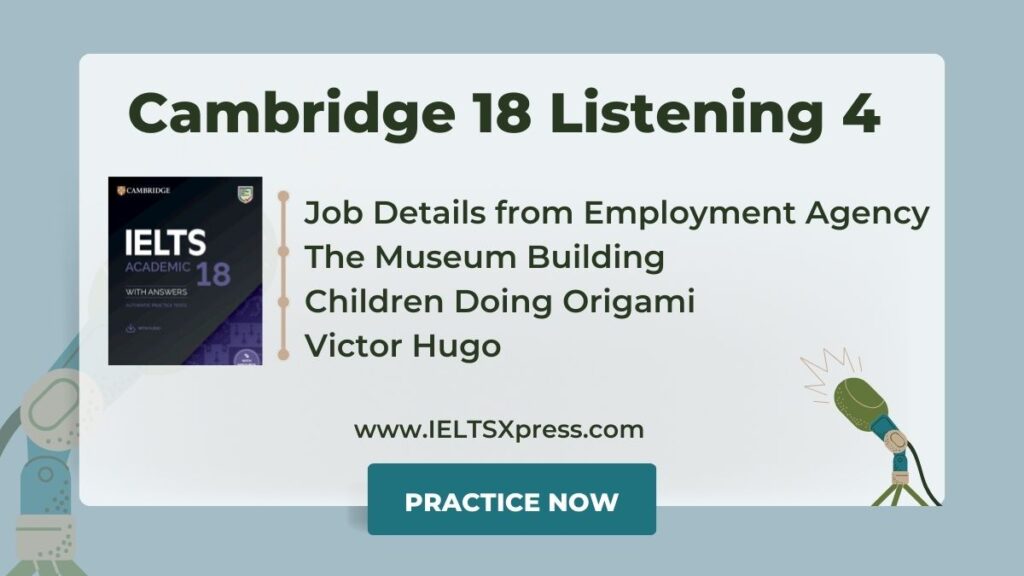
Cambridge IELTS 18 Listening Test 4 with Answers
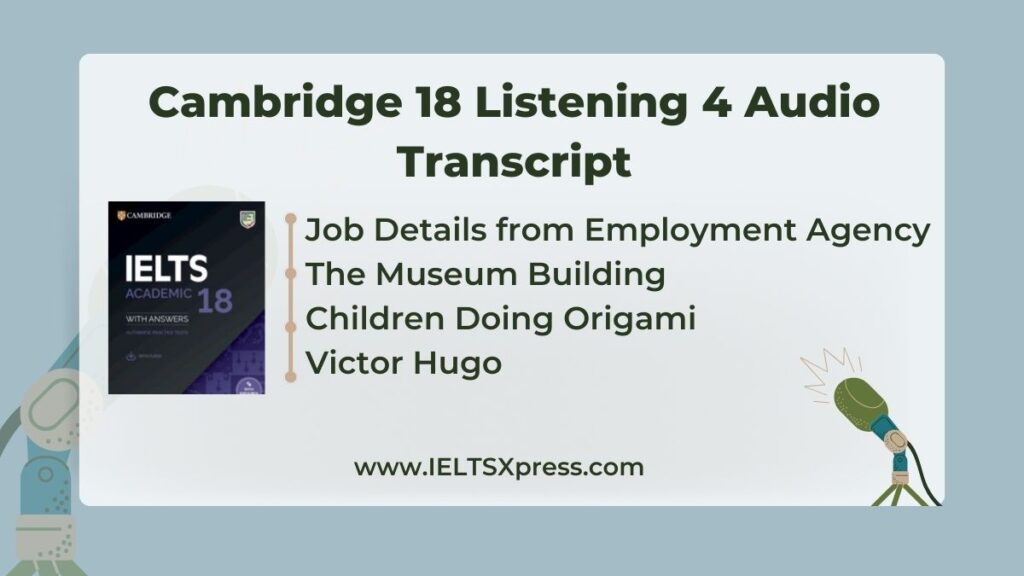
Cambridge IELTS 18 Listening Test 4 Audio Transcript
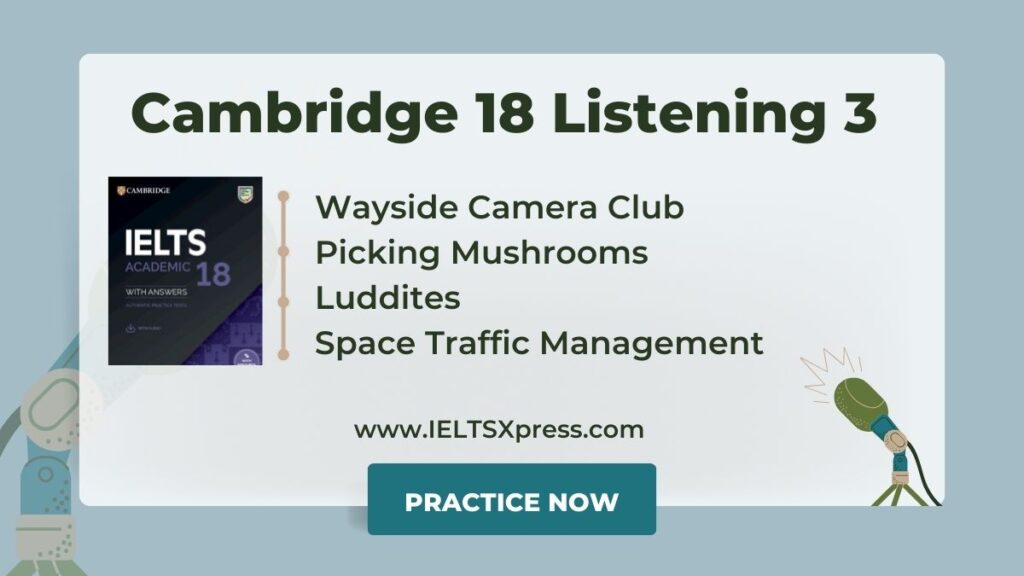
Cambridge IELTS 18 Listening Test 3 with Answers
Leave a comment cancel reply.
Your email address will not be published. Required fields are marked *
Yes, add me to your mailing list
Start typing and press enter to search

- Writing Correction
- Online Prep Platform
- Online Course
- Speaking Assessment
- Ace The IELTS
- Target Band 7
- Practice Tests Downloads
- IELTS Success Formula
- Essays Band 9 IELTS Writing Task 2 samples – IELTS Band 9 essays
- Essays Band 8 IELTS Writing – samples of IELTS essays of Band 8
- Essays Band 7 IELTS Writing – samples of IELTS essays of Band 7
- Essays Band 6 IELTS Writing – samples of IELTS essays of Band 6
- Essays Band 5 IELTS Writing – samples of IELTS essays of Band 5
- Reports Band 9 IELTS Writing – samples of IELTS reports of Band 9 (Academic Writing Task 1)
- Reports Band 8 IELTS Writing – samples of IELTS reports of Band 8
- Reports Band 7 IELTS Writing – samples of IELTS reports of Band 7
- Letters Band 9 IELTS Writing Task 1 – samples of IELTS letters of Band 9
- Letters Band 8 IELTS Writing – samples of IELTS letters of Band 8
- Letters Band 7 IELTS Writing – samples of IELTS letters of Band 7
- Speaking Samples
- Tests Samples
- 2023, 2024 IELTS questions
- 2022 IELTS questions
- 2021 IELTS questions
- 2020 IELTS questions
- High Scorer’s Advice IELTS high achievers share their secrets
- IELTS Results Competition
- IELTS-Blog App
Listening: The right way to answer
- Listening tips
Continuing the previous post, here comes
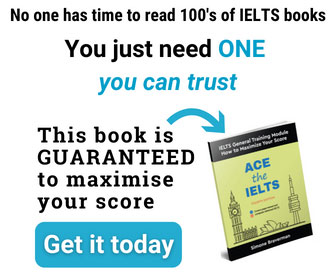
The reason you have to “answer as you listen” is that you immediately forget the sentences after you have heard them. This is what the stress, listening to foreign language and constant flow of information do – they make you forget. After hearing the third sentence you won’t be able to repeat the first. It means that when any part of the Listening test is over – you won’t be able to remember any of the answers.
So write them as you hear them, leave nothing for later.
Related posts:
- 6 Tips to Instantly Lift Your Listening Score The Listening test in IELTS can be tricky, for a...
- 3 Top Problems in IELTS Listening With Solutions When you are taking the Listening test on a computer,...
- IELTS Speaking Test, Part 2 question with model answer (Describe something special that you would like to buy in the future) Here is a high-scoring Speaking Test Part 2 model answer...
2 thoughts on “Listening: The right way to answer”
Pingback: IELTS-Blog » Listening tip # 5
After 3 months back i ma facing IELTS exam .so,now i am busy in my study.so, to score best score what i have to prepare from today tell me if any body have knowledges.
Leave a Reply
Your email address will not be published. Required fields are marked *
Save my name, email, and website in this browser for the next time I comment.
Share this test
Are you sure you want to view the solution now.
*This action will NOT SUBMIT your test and your answers will be LOST
Review your answers
* This window is to review your answers only, you cannot change the answers in here
Are you sure to exit the test?
Are you sure you want to submit, please select answer, your test has been saved draft, this test has been done, questions 1-4 listen from here.
Complete the form below.
Write NO MORE THAN TWO WORDS OR A NUMBER for each answer.
Questions 5-10 Listen from here
Complete the table below.
Write NO MORE THAN TWO WORDS AND/OR A NUMBER for each answer.
Questions 11-20 Listen from here
Complete the sentences below.
Write NO MORE THAN THREE WORDS for each answer.
Questions 21-27 Listen from here
Complete the summary below.
Write ONE WORD ONLY for each answer.
Questions 28-30 Listen from here
Choose THREE letters A-G.
Which THREE pieces of advice does the tutor give the student?
Questions 31-36 Listen from here
Complete the flow chart below.
Questions 37-40 Listen from here
Answer the questions below.
Write NO MORE THAN THREE WORDS AND/OR A NUMBER for each answer.
How many main trading partners of the UK does the tutor want her students to focus on?
Which sector does the tutor want students to study?
What changing things does the tutor want students to look at?
When does the tutor want the project completed by?
Welcome Guest!
- IELTS Listening
- IELTS Reading
- IELTS Writing
- IELTS Writing Task 1
- IELTS Writing Task 2
- IELTS Speaking
- IELTS Speaking Part 1
- IELTS Speaking Part 2
- IELTS Speaking Part 3
- IELTS Practice Tests
- IELTS Listening Practice Tests
- IELTS Reading Practice Tests
- IELTS Writing Practice Tests
- IELTS Speaking Practice Tests
- All Courses
- IELTS Online Classes
- OET Online Classes
- PTE Online Classes
- CELPIP Online Classes
- Free Live Classes
- Australia PR
- Germany Job Seeker Visa
- Austria Job Seeker Visa
- Sweden Job Seeker Visa
- Study Abroad
- Student Testimonials
- Our Trainers
- IELTS Webinar
- Immigration Webinar
IELTS Answer Sheet pdf 2021: Listening, Reading and Writing
Updated On Oct 09, 2022

Share on Whatsapp
Share on Email
Share on Linkedin
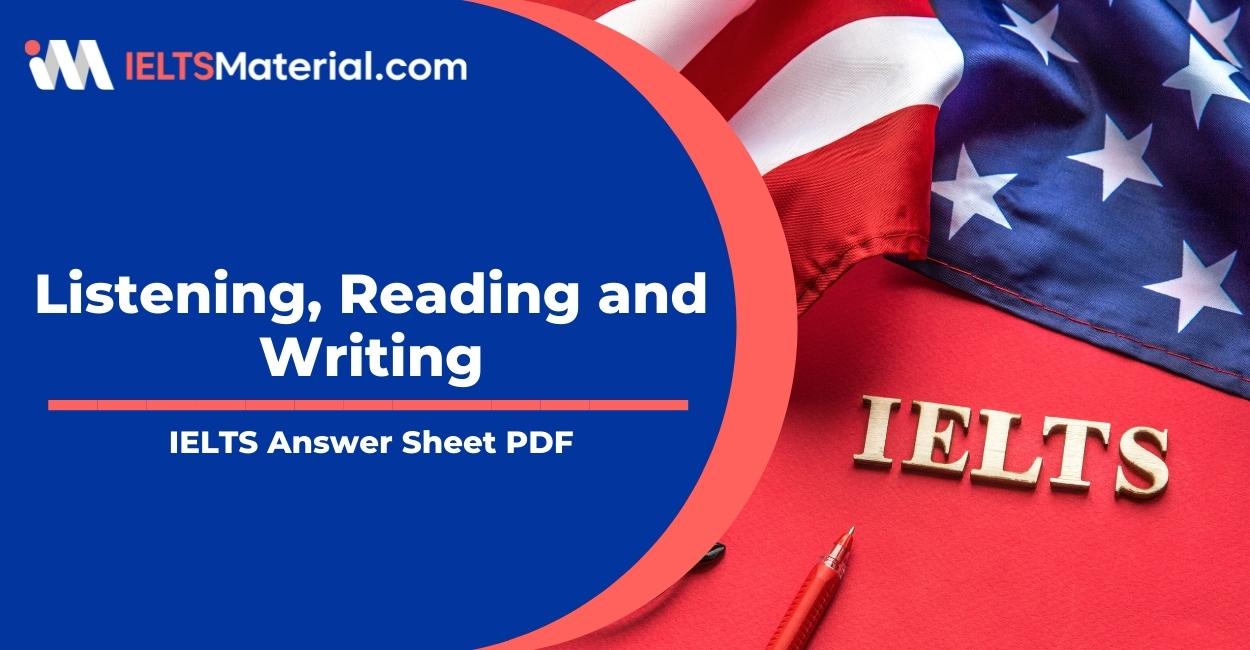
Limited-Time Offer : Access a FREE 10-Day IELTS Study Plan!
Your future may be unlocked with a strong IELTS score. For admittance to prestigious institutions around the world, English language learners must demonstrate their proficiency in the language. For many professionals wishing to work for global corporations, it is also a prerequisite for moving to an English-speaking nation. Therefore, the trajectory of your future achievement is determined by your IELTS score.
As we all know, IELTS has 4 sections: Speaking, Listening, Reading and Writing.
To familiarise yourself with the questions asked in the IELTS exam, you should download the IELTS answer sheets for Listening, Reading and Writing to practice at home. You can download the pdf of the IELTS sample answer sheet from the link at the end of this article.
IELTS Listening Answer Sheet 2021
In the listening test, you will have 30 minutes to listen to the recordings, during which you’ll be allowed to write down points on the question sheet or the booklet that is given to you. After you listen to the audio, you will have an extra 10 minutes to transfer them to the given answer sheet. You are also allowed to underline the important sentences for your reference while transferring the answers.
[do_widget id=custom_html-23]
IELTS Reading Answer Sheet 2021
In the IELTS reading test, you have 1 hour to complete the answer. Here the main task is to read the passage and write the answers for the questions given simultaneously. You can write the answers in the question paper too but it will be a waste of time as there won’t be any extra time given again to transfer the answers to the answer sheet. Thus, it is advisable to directly write the answers in the answer sheet itself.
[do_widget id=custom_html-47]
IELTS Writing Answer Sheet 2021
Before taking the writing test, it is advisable to practice it using the official website as it includes different tasks in it and without practice, it may become difficult for you to transfer the answer from the booklet to the answer sheet simultaneously and quickly.
As a conclusion, the scores for the IELTS test can be given only when there are answers written in the answer sheet. Even if the answers in the booklet or the question paper are correct. until and unless you transfer them to the answer sheet you will not get the scores. So it is important to be able to quickly transfer your answers to the answer sheet.
Download the IELTS answer sheet sample here:
Download Mirror 1
Tips for writing in the IELTS answer sheets
- During the test write the answers on the listening paper itself.
- Use a pencil in order to avoid mistakes.
- Write the answer in front of every question number so that if you do a mistake you can erase it and write the correct answer.
[do_widget id=custom_html-25]
- You only get 10 minutes so use it wisely.
- You will have time to check the spellings after you transfer the answer.
- You are supposed to write your full name in capital letters.
- You need to fill the appropriate boxes in order to indicate the date and the candidate number.
- The candidate number will be provided to you as soon as you enter the examination hall or it will be displayed on the desk in which you sit to write the exam.
- IELTS Writing tips
- Tips to Improve IELTS Reading Skills
- IELTS Writing recent actual test
- IELTS Writing Answer sheet
- IELTS map vocabulary
Learn everything about IELTS

Start Preparing for IELTS: Get Your 10-Day Study Plan Today!
Nafia Zuhana is an experienced content writer and IELTS Trainer. Currently, she is guiding students who are appearing for IELTS General and Academic exams through ieltsmaterial.com. With an 8.5 score herself, she trains and provides test takers with strategies, tips, and nuances on how to crack the IELTS Exam. She holds a degree in Master of Arts – Creative Writing, Oxford Brookes University, UK. She has worked with The Hindu for over a year as an English language trainer.
Explore other Writing Articles
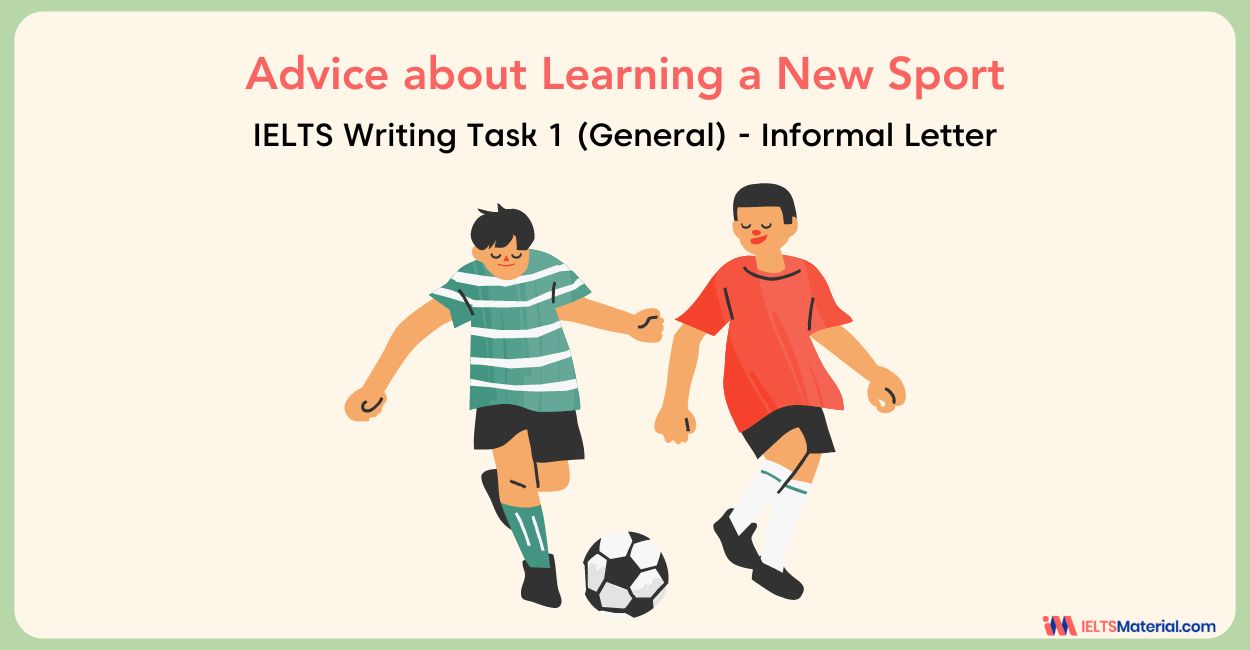
Kasturika Samanta
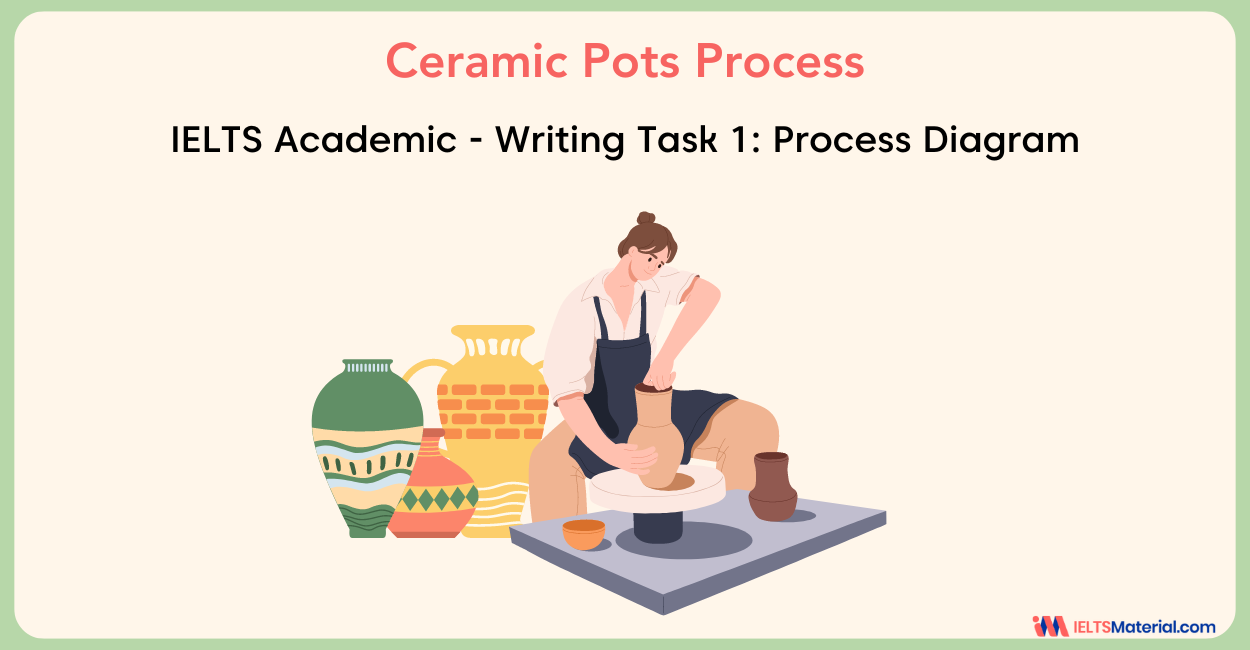
Akanksha Tripathi
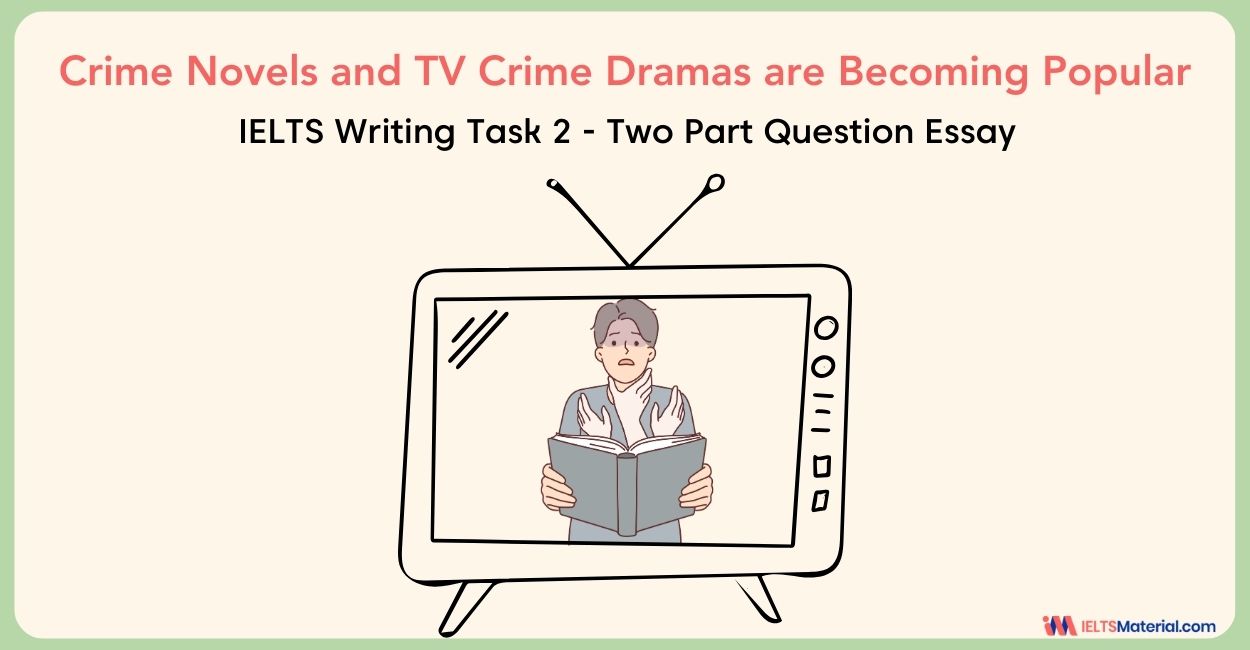
Raajdeep Saha

Post your Comments
Recent articles.

Nehasri Ravishenbagam

Courtney Miller

Janice Thompson
Our Offices
Gurgaon city scape, gurgaon bptp.
Step 1 of 3
Great going .
Get a free session from trainer
Have you taken test before?
Please select any option
Get free eBook to excel in test
Please enter Email ID
Get support from an Band 9 trainer
Please enter phone number
Already Registered?
Select a date
Please select a date
Select a time (IST Time Zone)
Please select a time
Mark Your Calendar: Free Session with Expert on
Which exam are you preparing?
Great Going!

IMAGES
VIDEO
COMMENTS
Write ONE WORD ONLY for each answer. Foundation for Essay Writing. ... Answer Listening Practice Test 02. Section 1. 1 Practical. 2 Pizza(s) 3 (light) walking. 4 Pine Park. 5 Fruit juice. 6 B. 7 I. 8 C. 9 B. 10 I. Section 2. 11 Padded. 12 Corners. 13 Special skill. 14 Learning toys. 15 Disinfect. 16 Germs.
Foundation For Essay Writing listening practice test 2023 with answers | IELTS Listening Practice TestFollow me on InstagramIG- @manmeetielts17WHATSAPP- 9256...
1 Answer: practical. Listen from here Locate Explain Report. The keywords concerned in Q1 must be "diet", "both", "sensible". From the question, we can assume that the answer must be an adjective. When Mary said about "eating plan", it refers to "Mary and Peter's diet" and Peter said "sensible and practical".
Foundation for Essay Writing Listening Answers IELTS Reading And Listening Answers.
Giải đề IELTS Listening Actual Test 6, Test 2, Section 3: Foundation For Essay Writing Question 21. Đáp án: topic. Vị trí thông tin: Eric: Yes, I have a few issues to discuss. Obviously I want a good essay, and I want to achieve high marks. But I'm not sure on the best way to start. Ms. Harris: That's an easy question.
Mary: And that's part of the sensible eating plan that we have agreed we need to formulate—one that we can both follow. Peter: That's right, sensible, and practical (Q1) — allowing us to indulge in some sweet foods on occasions. Mary: On rare occasions, and we're going to cut out all the pizzas (Q2) and hamburgers.
As "fast train" and "platform9" perfectly match our expected keywords, we can be sure that the answer for Q1 must be "8.30". 2 Answer: King's Cross. Listen from here Locate Explain Report. The keyword concerned in Q2 must be "nearest station". From the question, we can assume that the answer must be a name.
Foundation For Essay Writing IELTS Listening Answers With Audio, Transcript, And Explanation. Luyện tập đề IELTS Listening Practice với Foundation For Essay Writing được lấy từ cuốn sách IELTS Actual Test 6 - Test 2 - Section 3 kèm Answer key, list từ vựng IELTS cần học trong bài đọc và Free PDF & Audio Transcript Download với trải nghiệm thi IELTS trên ...
Part 1. Questions 1-5Listen from here. Complete the sentences. Write NO MORE THAN TWO WORDSfor each answer. Example. Peter consumes far too much soft drink. Peter and Mary's diet will be both sensible and. Every two months, they can eat. On Saturdays, they will go.
IELTS Listening Test with Answers. This is a full IELTS listening test with answers. In the video you can watch the IELTS listening test and the answers are at the end of the video, or you can download the answers below. If you want you can download this answer sheet to write your answers on, though remember in the real test candidates write ...
Write NO MORE THAN TWO WORDS for each answer. ... Write ONE WORD ONLY for each answer. Foundation for Essay Writing. ... IELTS Listening Actual Test With Answers - Test 3. IELTS Writing Task 2: Sample #55. Sample IELTS Writing Task 1: Map. 11 Common Slang words - IELTS Speaking.
Listening Test 129. Part 1: Questions 1-5 Complete the sentences below. Write NO MORE THAN TWO WORDS for each answer. Peter consumes far too much soft drink. 1. Peter and Mary's diet will be both sensible and 2. Every two months, they can eat 3. On Saturdays, they will go 4. This coming Saturday, they will go to 5. In every meal, there will ...
In the Listening Test 62, you will hear 4 audio recordings and answer questions 1-40 based on them. Each recording shall be played only once. Section 1 is a woman asking a shop assistant about DVD players.. Section 2 is a salesman giving information to house owners about an alarm system.. Section 3 is a conversation between a student and his tutor asking for advice about essay writing.
Questions 31-33 Complete the sentences below. Write NO MORE THAN ONE WORD for each answer,. RADIO WRITING. You may have to ignore some of the ordinary 31_____ of writing. Written words do not indicate things like emphasis, the 32_____ Of reading or where to pause. A script needs to sound like a 33_____ . Questions 34-40
4 Foundation English Test - Test format overview Foundation English Test: Listening There are three parts to the listening test. You can listen to each of the recordings twice. At the beginning of the test, you will be asked to check the volume of your headset. Make sure that you can hear clearly. Part Recognising information Part 1 Matching people
PART-1Questions 1-5Complete the information below.Write ONE WORD OR A NUMBER for each answer..... - ielts listening practice test 27. Skip to content (Press Enter) OCI CLASSES. Oxford Computer Institute. Search for: Home; LEARN ENGLISH. TENSES. PRESENT TENSE. ... Essay Writing! Essay writing is simply the process of ...
Listening Tip # 4 - Answer as you listen. What I mean here is that you need to listen and write the answer at the same time. Make no mistake - it is not a very natural thing for you, so you have to practice a lot doing this. The reason you have to "answer as you listen" is that you immediately forget the sentences after you have heard ...
Xem giải thích chi tiết của IELTS Listening Passage Foundation For Essay Writing được lấy từ cuốn sách IELTS Actual Test 6 - Test 2 - Section 3. Giải thích được trình bày bằng Linearthinking được-cục-sở-hữu-trí-tuệ-công-nhận của DOL, và với giao diện dễ nhìn và dễ hiểu với các thí sinh IELTS.
Questions 11-20 Listen from here. Complete the sentences below. Write NO MORE THAN THREE WORDS for each answer. Your home: A quarter of break-ins are through the. The of the house should also be protected. You should warn burglars your house is alarmed by putting a in the window.
IELTS Listening Answer Sheet 2021. In the listening test, you will have 30 minutes to listen to the recordings, during which you'll be allowed to write down points on the question sheet or the booklet that is given to you. After you listen to the audio, you will have an extra 10 minutes to transfer them to the given answer sheet.
A practice version of the official IELTS writing answer sheet. This practice version is modified for teacher/student use and available only on IELTS Academic as a free PDF download. Unlike the official IELTS writing answer sheet, the practice version includes 12-point double-spaced lines for easier correction and annotation. There are also ...
Luyện tập đề Listening Practice với Foundation For Essay Writing được lấy từ cuốn sách IELTS Actual Test 6 - Test 2 - Section 3 với trải nghiệm thi IELTS trên máy và giải thích đáp án chi tiết bằng Linearthinking, kèm list từ vựng IELTS cần học trong bài đọc.
In the section Reading of the academic version of IELTS exam participants need to read three texts and answer 40 questions (13-14 questions for each paragraph). In the general variant of the exam texts are simpler and shorter than in academic one. To do all the tasks of the Reading section (section on the official site) you have 60 minutes.